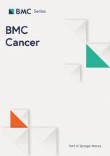Introduction
Most cardiovascular disease (CVD)-related events could be prevented or substantially delayed with improved diet and lifestyle. Providing information on structural vascular disease may improve CVD risk factor management, but its impact on lifestyle change remains unclear. This study aims to determine whether providing visualisation and pictorial representation of structural vascular disease (abdominal aortic calcification (AAC)) can result in healthful diet and lifestyle change.
Methods and analysis
This study, including men and women aged 60–80 years, is a 12-week, two-arm, multisite randomised controlled trial. At baseline, all participants will have AAC assessed from a lateral spine image captured using a bone densitometer. Participants will then be randomised to receive their AAC results at baseline (intervention group) or a usual care control group that will receive their results at 12 weeks. All participants will receive information about routinely assessed CVD risk factors and standardised (video) diet and lifestyle advice with three simple goals: (1) increase fruit and vegetable (FV) intake by at least one serve per day, (2) improve other aspects of the diet and (3) reduce sitting time and increase physical activity. Clinical assessments will be performed at baseline and 12 weeks.
Outcomes
The primary outcome is a change in serum carotenoid concentrations as an objective measure of FV intake. The study design, procedures and treatment of data will adhere to Standard Protocol Items for Randomized Trials guidelines.
Ethics and dissemination
Ethics approval for this study has been granted by the Edith Cowan University and the Deakin University Human Research Ethics Committees (Project Numbers: 20513 HODGSON and 2019-220, respectively). Results of this study will be published in peer-reviewed academic journals and presented in scientific meetings and conferences. Information regarding consent, confidentiality, access to data, ancillary and post-trial care and dissemination policy has been disclosed in the participant information form.
Trial registration number
Australian New Zealand Clinical Trial Registry (ACTRN12618001087246).








